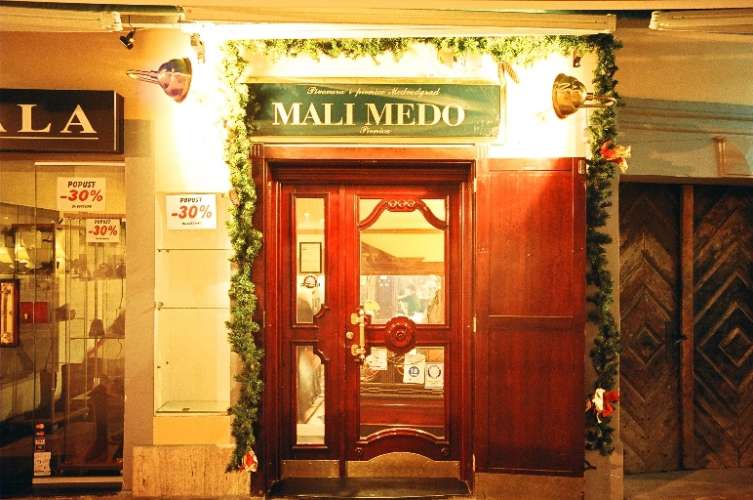back to Italy
Via delle Case Dipinte, 6/8, 56127 Pisa PI, Italy
- Quality and/or choice of drinks – 8/10
- Style and Decor – 8/10
- Character, Atmosphere and/or Local Life – 9/10
- Amenities, Events & Community – 7/10
- Value for Money – 7/10
- The Pub-Going Factor – 8/10
Opinions of Pisa tend to be mixed, which is a shame as the airport provides an excellent conduit for people to explore Tuscany, but often people venture no further than the Piazza Dei Miracoli before moving on. It’s certainly true the Tuscan idyll of cypress trees, rolling hills and gently worn villas is perhaps not best demonstrated in Pisa, but that’s not to say the town is without charm, far from it.
The city centre is certainly one of those places that feels like it gets taken over by young people at night. Yes, you can sigh at the peeling plaster and graffiti in some of the classical piazzas that have become a bit grungy but there is a certain verve and energy Pisa offers in compensation for that. It’s a good night out.
Beer isn’t Italy’s strong suit, however it has belatedly begun a concerted effort to catch up. When you have a little think about why it’s suddenly taking off, it makes sense. The young seek good beer out in Italy for a few different reasons. Wine is seen as the preserve of the middle-aged and middle class, increasingly more of a drink to enjoy with food or a particular occasion or season, whereas beer is more casual.
Of course there are those looking to be a bit hip and different for which beer offers an opportunity to pose and stand out/completely conform among peers. Boiling all that down, the main appeal as I see it, is that quite honestly beer and aperitifs are a better option in a hot country over the course of a long evening. It is still the case that in Italy good beer is a bit of a novelty, but craft beer has been riding the crest of a rising wave for a few years now.
Pisa’s very best exponent of this is Orzo Bruno (a play on words with Orso meaning Bear and Orzo meaning Barley) not just a place with good beer on tap, but a really, really good pub. In order to find Orzo Bruno you naturally find yourself wandering into the epicentre of the city’s nightlife. It’s a nice walk in, as you can feel the volume and excitement level gradually rise. You’ll find the pub and its unassuming exterior perched down a side-street, yet in the thick of the action.
Inside, it’s an informal affair with pinewood type seating falling somewhere inbetween modern and ramshackle. In the summer heat the windows and thrown open and there are tables and chairs outside. As with all great pubs, everyone looks like they’re having a good time. The best of all, it looks and feels predominantly like somewhere Pisans go themselves, with a ring of authenticity you just can’t fake.
On tap you’ll find local Italian brews for a decent price – their predilections for strong beers and German styles ensures you can purchase some strong, tasty stuff for quite a lot less than you’d expect. Wit beer, red beer, doppio malto, it’s nice to go to the heart of interesting Italian brewing styles and have a genuine isolated and authentic ‘Italian beer experience’ in what is a nice pub.
These are brewed at a co-operative brewery Il Birrificio Artigiano, an excellent idea still common in Germany where provincial beer enthusiasts have occasional use of shared premises of a scale capable of delivering decent volume. These beers are usually unpasteurised and unfiltered, which is fine because they aren’t designed to last, but to be drunk straight away! You may even find oddities such as attempts at cask conditioned bitter served by Angram hand-pumps.
There’s a little something extra on offer too, that a lot of English people won’t be used to. It’s difficult to find complimentary anything with a drink in England these days, yet in Orzo Bruno dig into a veritable platter of snacks laid out on plates in front of the bar to enjoy with you beer from 7pm onwards.
Spain and Italy are insistent that food must in nearly all cases accompany drink, which is not my view, but offers a change of speed. You may want to consider leaving some room after your evening meal to enjoy the range of snacky bites on offer. It’s a quick way of adding on further poundage on top of the calories in your beer, so don’t go over the top!
Orzo Bruno works well whether at day or night, which is typical of places of its kind that stay low key and informal. You could pop in mid-afternoon and read a book with a pint of head here at 11 in the evening with a group. It’s just an all-round good place, reinforced by the enthusiastic patronage of locals. They also do discounts between 7-8.30pm, which is much later (and therefore better) than most happy hours in England.


